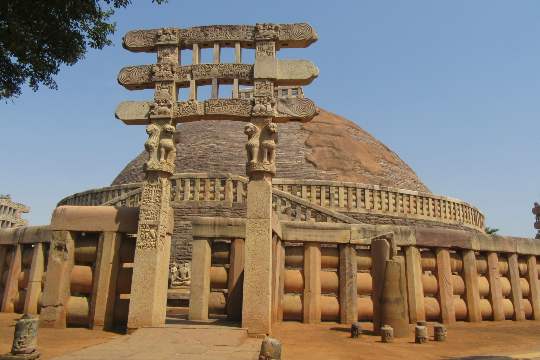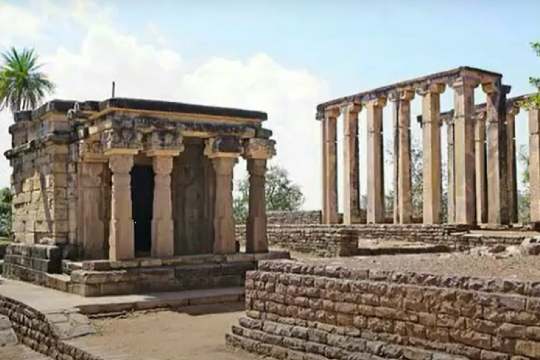Sanchi Travel Guide
Exploring the Ancient Buddhist Monuments of Sanchi: A Travel Guide
Sanchi is an ancient Buddhist site located in the state of Madhya Pradesh, India, that is known for its well-preserved monuments and rich cultural history. The site is home to several stupas, monasteries, and temples that date back to the 3rd century BCE, making it an important destination for anyone interested in Buddhism or ancient Indian history. This travel guide will provide an overview of the must-see sights and activities in Sanchi, as well as some tips for making the most of your visit.
The highlight of Sanchi is the Great Stupa, which is considered to be one of the oldest stone structures in India. It was built by the emperor Ashoka in the 3rd century BCE to house relics of the Buddha. The stupa is massive in size and features several intricately carved stone gateways that depict scenes from the life of the Buddha. Visitors can climb to the top of the stupa for a stunning view of the surrounding countryside.
Another important monument in Sanchi is the Sanchi Stupa No. 2, which is smaller than the Great Stupa but equally impressive. It was built in the 2nd century BCE and is known for its finely carved gateways and intricate sculptures. The stupa is also a UNESCO World Heritage Site.
In addition to the stupas, there are several other monuments to explore in Sanchi, including the Ashoka Pillar, which stands at the entrance of the Great Stupa, and the many monasteries and temples that are scattered throughout the site. Visitors can also explore the on-site museum, which houses a collection of artifacts and sculptures that were discovered at the site.
Sanchi is also a great destination for those interested in Buddhism and spirituality. Visitors can spend time meditating and contemplating at the ancient monasteries and temples, which offer a sense of peace and tranquility.
When planning your visit to Sanchi, it's important to keep in mind that the site can get quite hot during the day, so it's best to plan your visit in the morning or late afternoon. Be sure to bring plenty of water and wear comfortable clothing and footwear. The best time to visit is between October to March as the weather is pleasant.
In conclusion, Sanchi is a must-visit destination for anyone interested in Buddhism or ancient Indian history. The well-preserved monuments, including the Great Stupa and the Sanchi Stupa No. 2, offer a unique insight into the culture and beliefs of ancient India. The site is also great destination for those looking for peace, tranquility, and spiritual introspection. A visit to Sanchi will be an unforgettable and enriching experience.
Speak to someone
who's been there

+91-9873003099
MAKE AN ENQUIRYBest Places To Visit In Sanchi
From historical cities to natural wonders, come see the best of Sanchi.

Sanchi Stupa
Built during the reign of Emperor Ashoka around 3rd Century BC, the splendid architecture of the Stupa is surrounded by ‘Toranas’ that reflect love, peace, trust, and courage. The central chamber of the Stupa is made up of large hemispherical domes, which comprise of different relics of Lord Buddha. It is one of the well preserved ancient stupas in central India and is ranked among the world Heritage sites.

Ashoka Pillar Sanchi
Ashoka Pillar located at Sanchi is recognised by the government of Madhya Pradesh as one of the most attractive tourist destinations in the state. The pillar consists of a shaft and a crown of four lions. These lions stand back to back and the pillar was erected in the 3rd century BC. It is true that at present one cannot get a glimpse of the whole pillar. The shaft of the pillar can be seen at the gateways, but the crown is kept in the museum. The architecture of the Ashoka Pillar is said to be of the Greco-Buddhist style. The pillar is undoubtedly very well proportioned in nature. The Ashoka Pillar at Sanchi has a lot of resemblance to the Pillar at Sarnath. The pillar is very well furnished. The pillar of Sanchi does not possess the Dharmachakra unlike the pillar of Sarnath.

ASI Museum Sanchi
Located initially on a hilltop near the Sanchi Stupa by Sir John Marshall in 1919, the Sanchi museum, now preserved and maintained by the ASI at the foothill of the Stupa, houses many unique and interesting Buddhist artefacts that were discovered during the clearance and excavation done at Sanchi. The museum became open to the public in 1966 when the museum was shifted. Its expanse is over 6.3 acres of land and houses the main hall and 4 galleries, consisting of artefacts and objects datable from the 3rd to the 12th century BC.

Sanchi Gupta Temple
The Gupta Temple at Sanchi is known worldwide for its simplicity and is referred to by historians as one of the most logically designed structures of Indian architecture. The temple adorns the middle layer of the Sanchi hill. The temple dates back to the fifth century AD and is considered a respected epithet of the Golden Age. The structure reflects the excellent development that was in the field of architecture during the Gupta period.

The Great Bowl
Amongst the various historical monuments which stand tall in Sanchi after centuries of being constructed, the Great Bowl or the Grand Gumbha is a large block of stone that was used to distribute food and other things to Buddhist Monks.
Best Travel Packages For Sanchi
Find the best deals on Sanchi Tour Packages for solo, family & group travelers.
Looking for a custom trip plan?
It only take 2 minutes to plan your own holiday itinerary.

